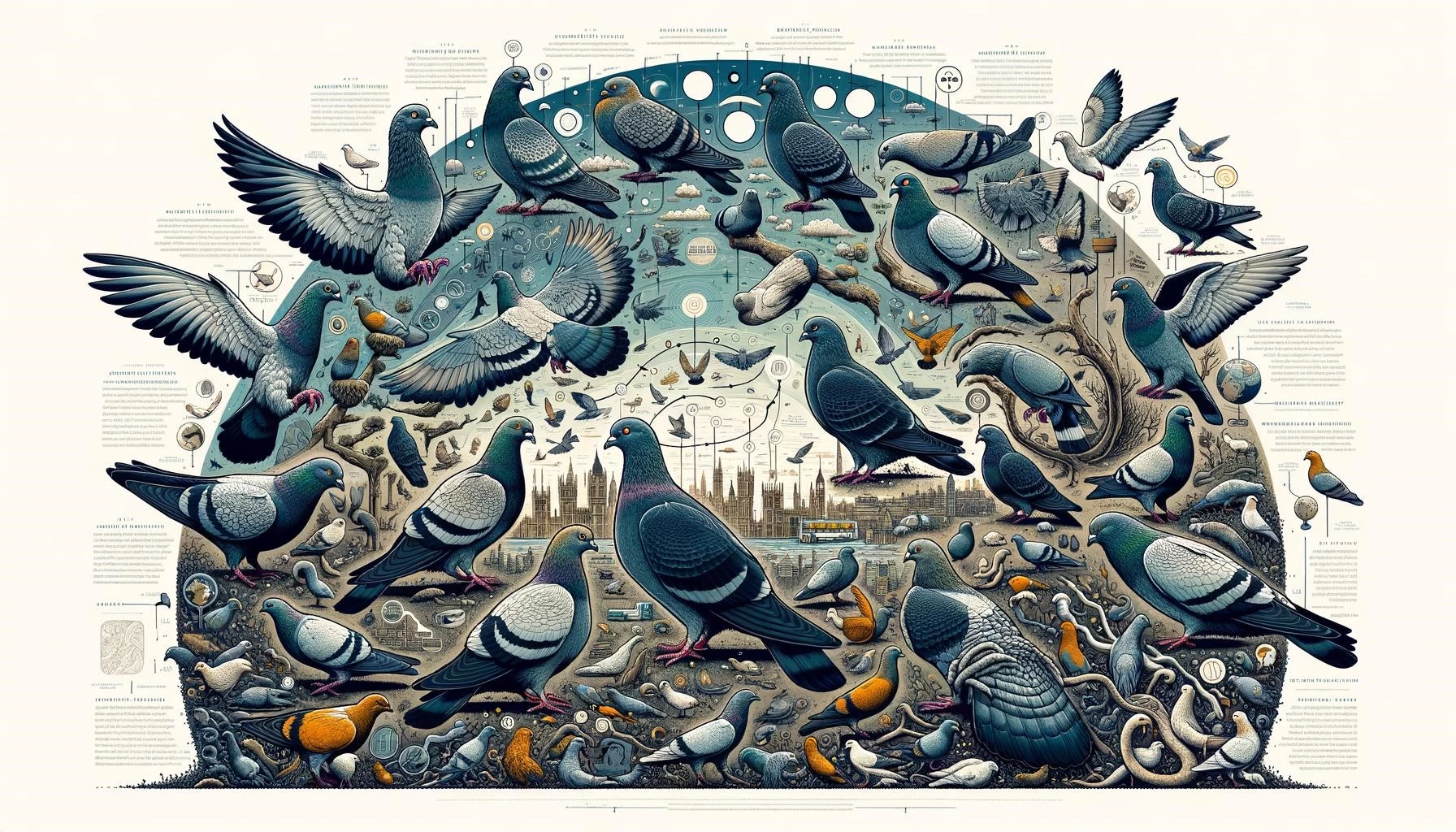Pigeons have a long and fascinating history intertwined with humans. From their origins as a subspecies of the rock dove to their role in human culture and symbolism, pigeons have left a significant mark on natural history. In this article, we will delve into the natural history of pigeons, examining their evolutionary background, their use in history, and their native habitats. Through this exploration, we will gain a deeper understanding of the intricate relationship between pigeons and natural history.
Key Takeaways
- The domestic pigeon is a subspecies derived from the rock dove, making it the world’s oldest domesticated bird.
- Pigeons have been a part of human history since ancient times and have been used for various purposes, such as messaging and racing.
- Passenger pigeons were once abundant in North America but went extinct due to human activities.
- Pigeons are found worldwide, with different species adapted to various habitats.
The Evolutionary History of Pigeons
The domestic pigeon, also known as Columba livia domestica, is a subspecies derived from the rock dove (Columba livia). These birds have a long history of association with humans, dating back to primitive times when they were worshipped as symbols of the all-powerful Mother Goddess. The rock dove, on the other hand, is considered the world’s oldest domesticated bird.
Pigeons belong to the Columbidae family, which also includes doves. They are stout-bodied birds with short necks, short slender bills, and fleshy ceres. Pigeons primarily feed on plants and can be divided into granivores and frugivores, depending on their diet.
Over time, pigeons have adapted to various environments and developed different physical characteristics. The numerous genera within the Columbidae family are classified into subfamilies, including the typical or true pigeons, fruit pigeons, crowned pigeons, and tooth-billed pigeon.
The Role of Pigeons in Human History
Pigeons have played significant roles in human history, with their use dating back thousands of years. They have been used for various purposes, including messaging, racing, and even military operations.
In ancient times, pigeons were trained and used as messengers in civilizations such as Persia, Mesopotamia, and Egypt. They played a crucial role in delivering important information, especially during times of war. Pigeons were known for their ability to fly long distances and find their way home, making them reliable messengers.
During World War I, pigeons were used by the British Intelligence Service to maintain contact with sympathizers and resistance movements in enemy-occupied territory. They were equipped with body-harnesses and parachutes, released from airplanes using clockwork mechanisms. These brave pigeons became symbols of heroism and inspired books, films, and poetry.
Pigeon Habitats and Distribution
Pigeons are found worldwide, except in the coldest regions and most remote islands. With over 250 known species, they are a diverse group of birds. The majority of pigeon species are found in Southeast Asia, Australia, and islands in the West Pacific, with limited numbers in Africa, South America, Eurasia, and North America.
Each species of pigeon has adapted to its own specific habitat. Some species thrive in cliffside settings, particularly sea cliffs, while others have found a niche in urban and city environments. Domestic pigeons, for example, have adapted well to urban areas, where they scavenge for food and seek shelter in man-made structures.
Understanding the natural history of pigeons provides insight into their evolutionary journey, their close association with humans throughout history, and their ability to adapt to various habitats. While often overlooked, pigeons have an intriguing natural history that deserves appreciation and study.









